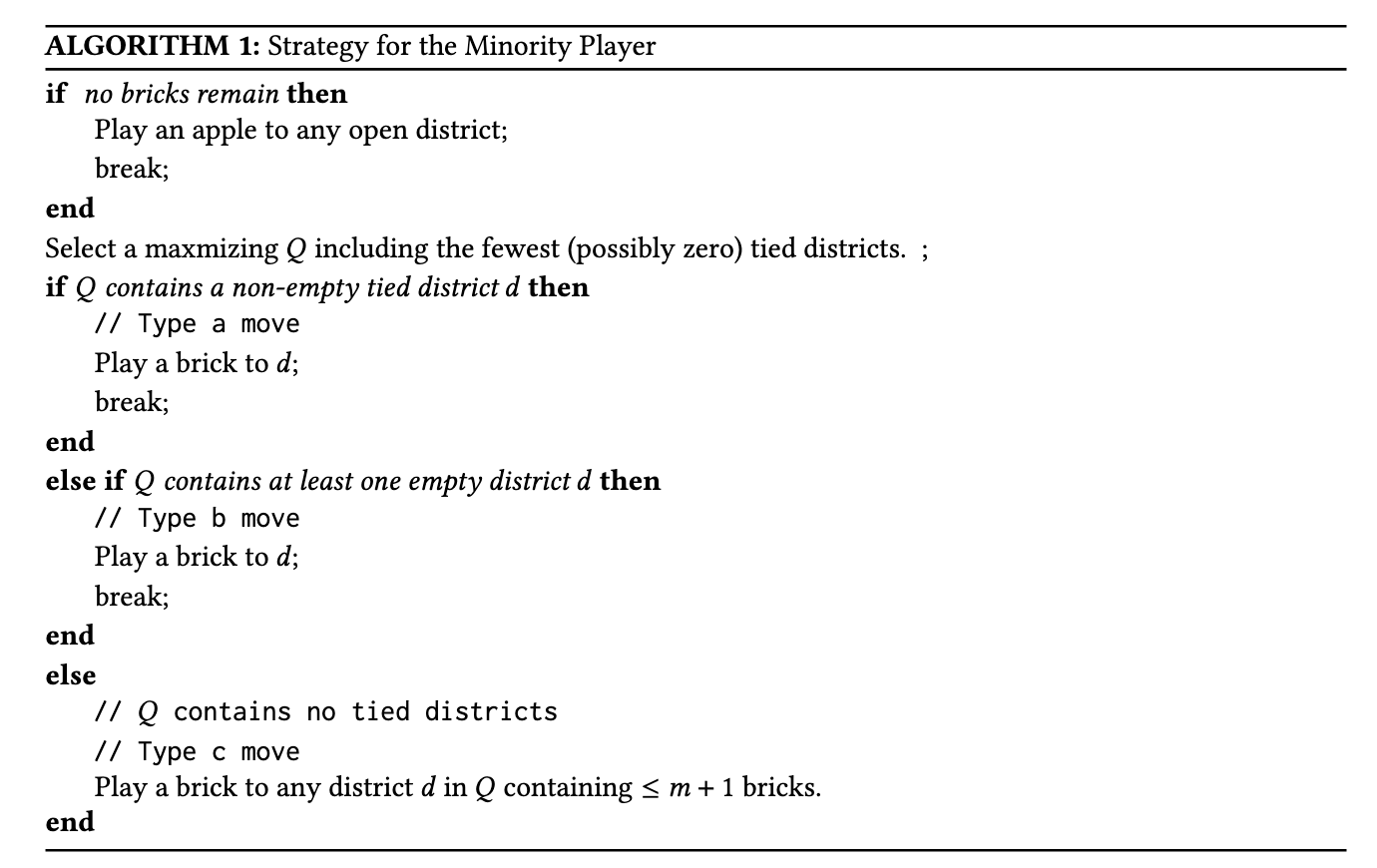Balls and Bins: Fair Redistricting
We explore the fairness of a redistricting game introduced by Mixon and Villar, which provides a two party protocol for dividing a state into electoral districts, without the participation of an independent authority. We analyze the game in an abstract setting that ignores the geographic distribution of voters and assumes that voter preferences are fixed and known. We show that the minority player can always win at least p−1 districts, where p is proportional to the percentage of minority voters. We give an upper bound on the number of districts won by the minority based on a “cracking” strategy for the majority.
P.S. Brick is the minority and Apple is the majority. There are j districts, each with positions for 2m + 1 voters, so that the total number of voters v = j (2m+1). Let n be the total number of bricks, and let q be the number of districts won by Brick at the end of the game. Q is the set of q districts in which Brick is either ahead or tied. 

